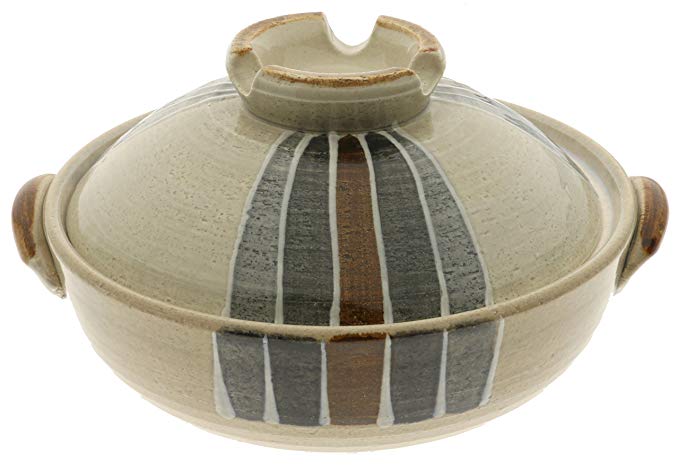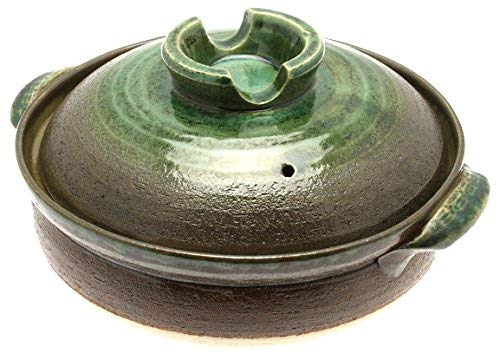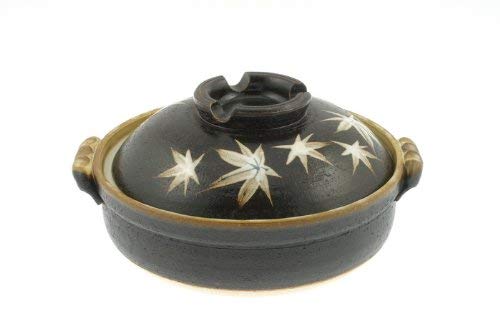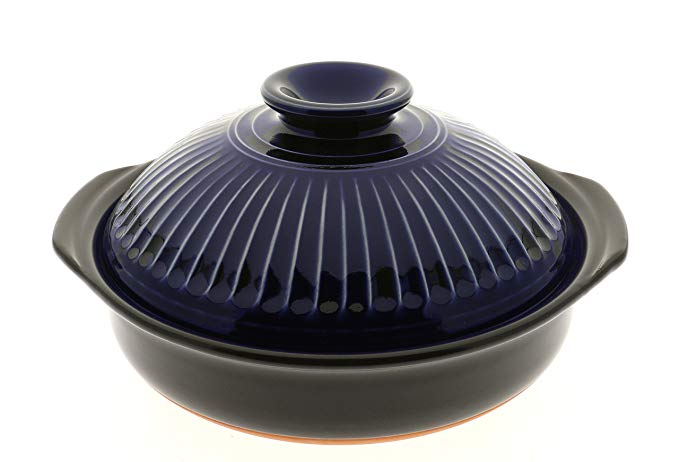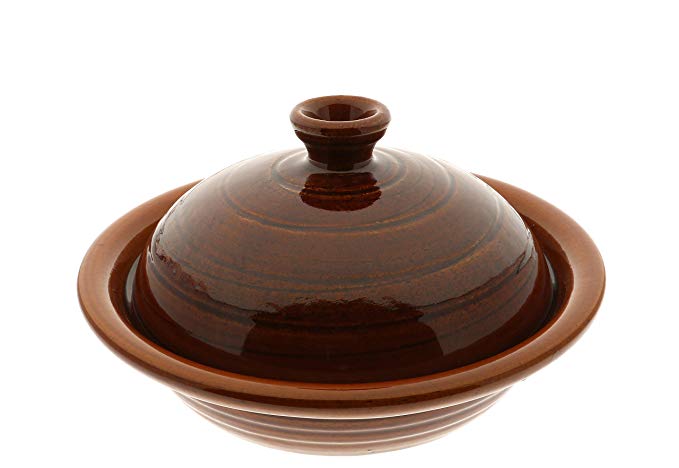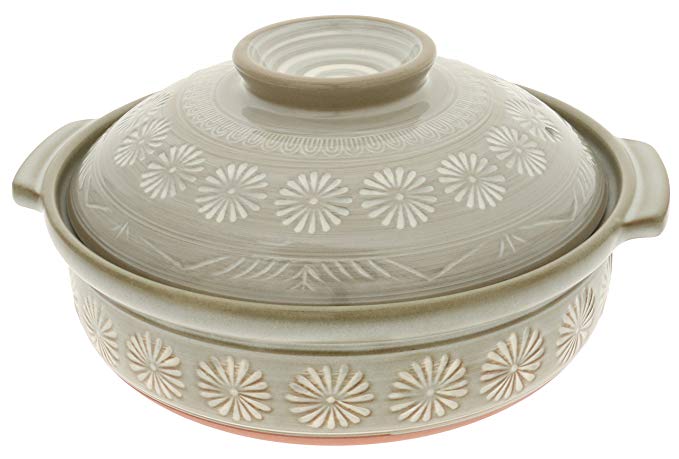- Make sure this fits by entering your model number.
- 1 Japanese Nabemono “hot pot”
- Made of earthenware
- Kyoto maple
This donabe “hot pot” is made in Japan. The design is a leaf from a maple tree that is common in the Kyoto area. This earthenware vessel is used to make “nabemono” in Japan, a warming one-pot meal popular during the winter. Traditionally, a portable stove is placed in the center of table, and the pot is filled with broth and ingredients. There are many different variations of nabemono. Broths can be as simple as water flavored with a little bit of dried kelp, to stronger tastes made chicken or miso. Ingredients often include seafood, poultry, pork, vegetables, tofu, and udon. Nabemono is meant to be eaten as a communal meal, where diners gather around the table and pick items directly from the pot.


